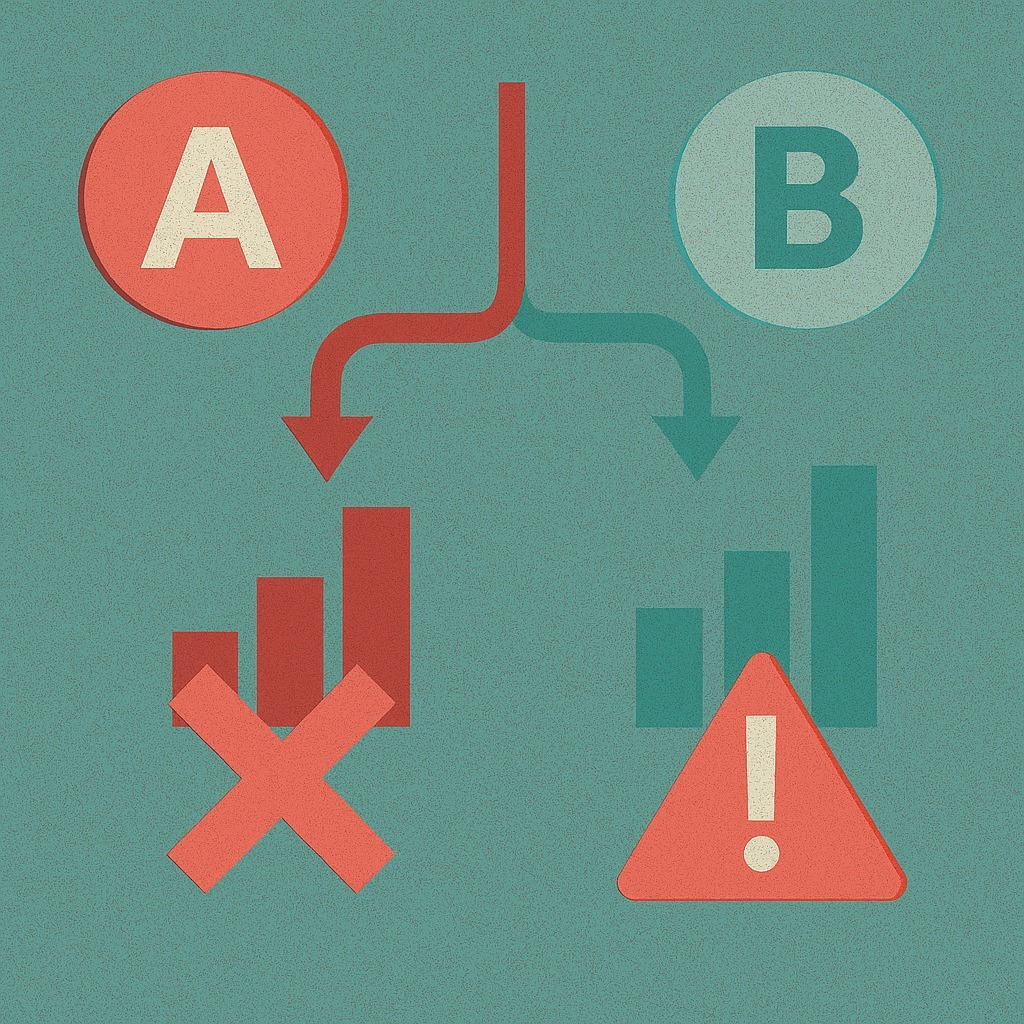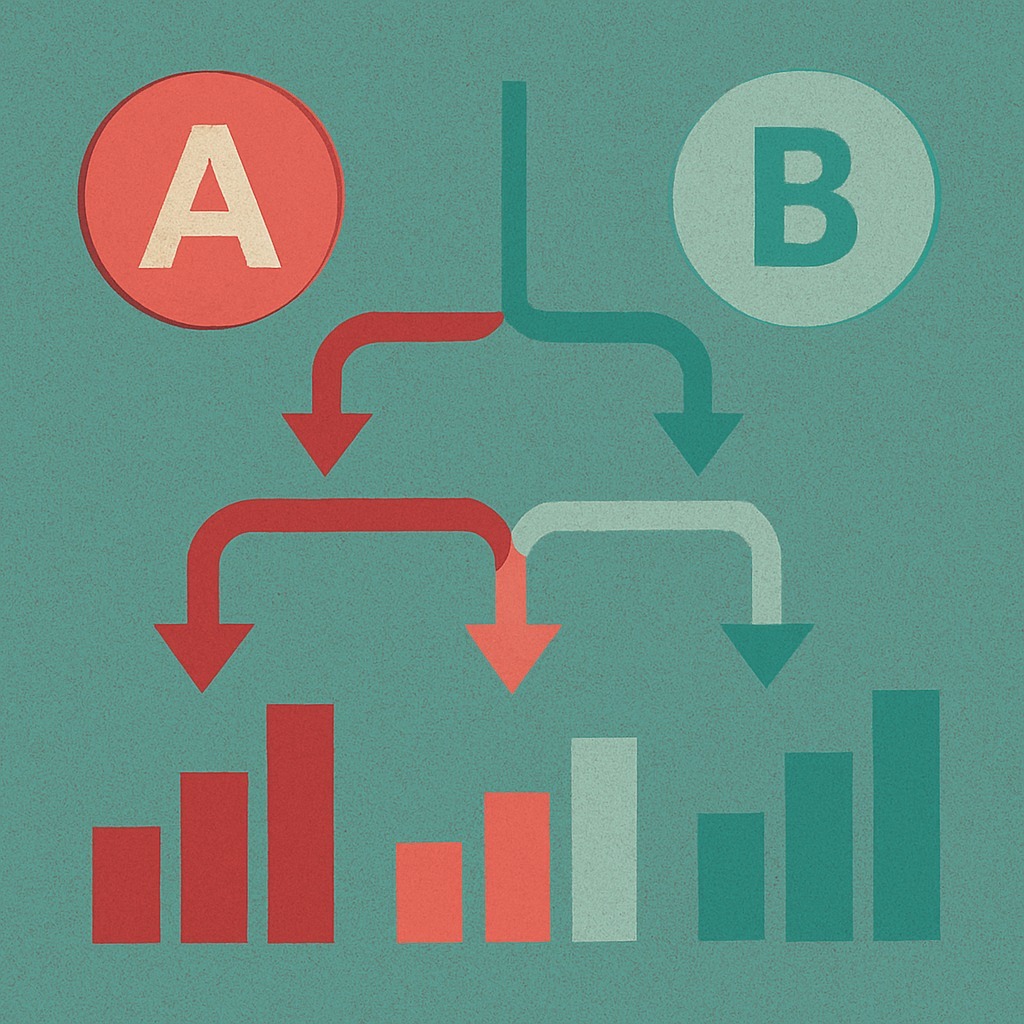
How to Build a Simple A/B Testing Framework (That Actually Drives Growth)

A/B testing is one of the best tools for improving your marketing and customer experience — but it can easily get messy without a clear plan.
The good news: you don’t need a complex system or a huge team to start running smarter tests. What you need is a simple framework — and the right mindset across your company.
Here’s how to set up testing that actually sticks and drives meaningful results.
1. Testing Works Best When It's a Team Sport
The most successful A/B testing programs aren’t built by a single person.
They work because multiple teams — marketing, product, sales, customer success — are bought in on continuous improvement.
Testing becomes a shared value, not just a project.
You’ll want people from across departments contributing ideas, sharing insights, and learning from results. The more perspectives you bring in, the better your test ideas will become.
Tip: Regularly involve team members in brainstorming sessions or sprint planning. Testing isn’t something that lives off to the side — it becomes part of how the whole organization thinks.
2. Executive Buy-In is Critical
Without leadership support, testing programs often stall out.
You need executives to:
-
Champion a culture of experimentation.
-
Set realistic expectations (not every test will be a winner).
-
Allocate time, resources, and visibility to testing efforts.
-
Celebrate learning, not just winning.
When leadership frames experimentation as a path to smarter growth, not just a series of quick wins, teams feel safe to try new things — and ultimately find bigger breakthroughs.
3. Use Both Qualitative and Quantitative Data to Find Test Ideas
Start by identifying opportunities from two types of information:
-
Quantitative data:
Conversion rates, bounce rates, funnel drop-offs, session recordings, heatmaps, event tracking.
(Tells you what is happening.) -
Qualitative data:
User interviews, surveys, customer feedback, usability testing.
(Helps explain why it's happening.)
When you bring numbers and narratives together, you find sharper, higher-value testing opportunities.
4. Score Test Ideas Across Three Factors
Once you have a list of test ideas, you need to prioritize.
Use a simple scoring model based on:
| Factor | Question | Scoring Range |
|---|---|---|
| Potential Impact | If this test succeeds, how big is the payoff? | 1–5 |
| Likelihood of Success | Based on the data, how confident are we this will work? | 1–5 |
| Ease of Execution | How simple is it to build, launch, and measure? | 1–5 |
Add up the scores.
Ideas with high impact, high certainty, and easy execution should rise to the top.
Leave labor-intensive, low-potential ideas for later.
5. Set Clear Goals and Success Metrics
Every test should have a clear, simple statement:
-
Hypothesis: If we do X, then Y will happen because [reason].
-
Success metric: What will you measure to know if it worked?
Example:
"Adding urgency to our product pages will increase checkout conversions by 10%, because it taps into loss aversion."
Clear goals help avoid "goalpost shifting" after results come in.
6. Build a Habit of Fast Learning
Not every test will produce a win — and that's exactly the point.
Testing isn’t about proving you were right. It’s about learning faster than your competitors.
Document every experiment:
-
What you changed
-
Why you changed it
-
What the results showed
-
What you’ll try next
Testing becomes a feedback loop that constantly sharpens your marketing, design, and product experiences.
Bottom Line:
A lightweight A/B testing framework isn't about adding complexity — it's about embedding curiosity, discipline, and teamwork into your growth efforts.
With executive support, cross-team participation, smart prioritization, and a commitment to fast learning, testing becomes a natural part of building a stronger, smarter business.
Need help setting up your first testing roadmap? Contact us — we can help you build a practical, scalable testing process that actually drives results.


